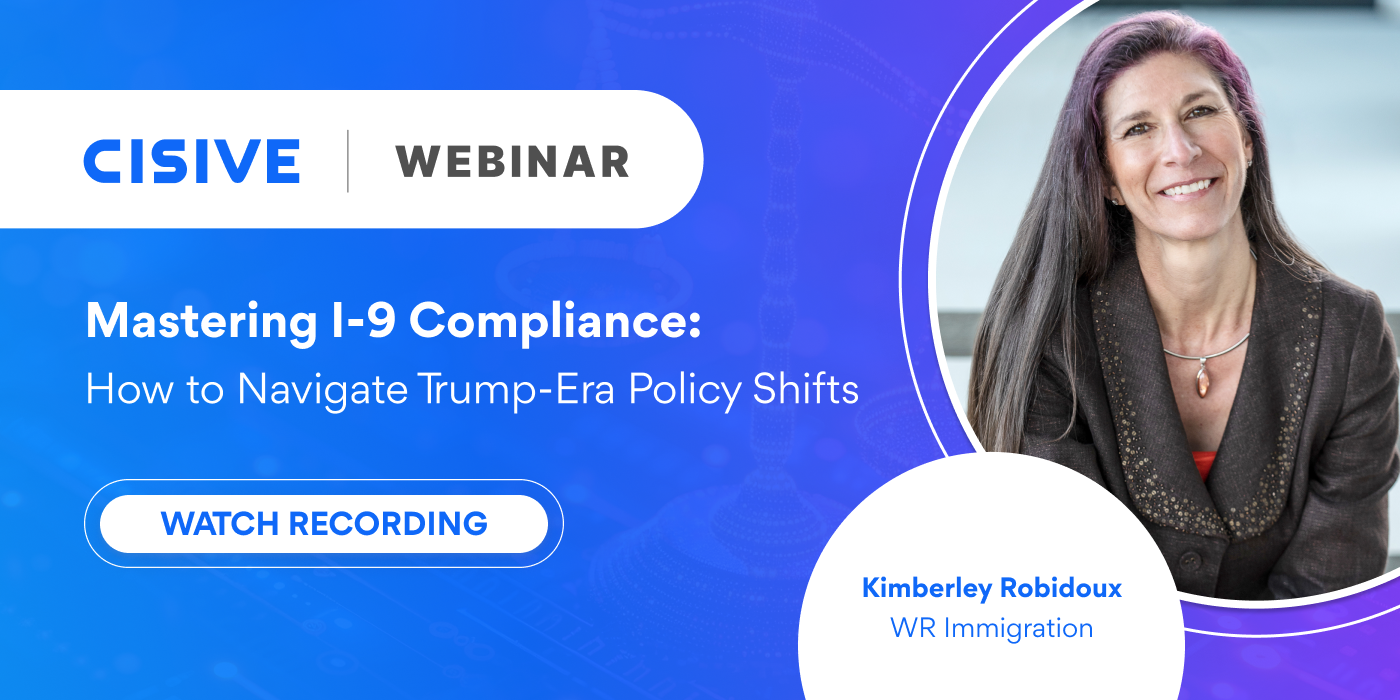

As the first 100 days of President Trump’s second term have come to a close, many employers are...

As U.S. immigration enforcement intensifies under new executive orders, I-9 compliance has taken center stage for employers in 2025. In a recent webinar hosted by Cisive and WR Immigration, legal expert Kimberley Robidoux offered HR professionals an in-depth look at the evolving I-9 landscape, including the latest federal mandates, enforcement trends, and best practices to mitigate risk.
This webinar recap should not be construed as legal advice. Consult with your legal counsel when considering your I-9 strategy.
The session opened with an overview of recent executive orders issued by the new administration, many of which prioritize stricter immigration enforcement. These orders:
These policy shifts signal a renewed focus on employer accountability and worksite enforcement.
Robidoux emphasized a notable increase in I-9 audits and ICE inspections, particularly for employers in:
ICE is also targeting businesses considered part of national security or critical infrastructure. Unlike previous years where audits were broadly issued, current inspections are largely complaint-driven, with agents pursuing leads tied to potential labor violations or workforce exploitation.
Employers should be prepared for both routine I-9 audits and unexpected ICE visits. Key guidance included:
The importance of clear procedures, staff training, and legal preparedness cannot be overstated.
Robidoux walked through the full lifecycle of an I-9 inspection—from receiving a Notice of Inspection to potential fines. According to Robidoux:
Robidoux noted a dramatic increase in fines issued by ICE despite a drop in total audits, signaling more targeted enforcement efforts.
The session also covered the rarely discussed but increasingly relevant topic of “harboring.” Employers who knowingly—or even recklessly—employ unauthorized workers may be charged under criminal statutes. A recent case involving a Texas bakery underscored how severe these penalties can be when housing and exploitation are involved.
To stay compliant and mitigate risk, Robidoux recommended:
The webinar concluded with a look at E-Verify+ (formerly "NextGen"). While promising, it’s not yet ICE-approved for audit trails and is currently only available to direct E-Verify users—not those working through web service providers.
As a leader in background screening and workforce compliance, Cisive is here to help you navigate complex requirements. Contact us or connect with one of our screening experts today.
Author: Jenni Gallaway
Bio: Content Marketing Manager at Cisive. 8 years of experience in the background screening industry.
Let's Connect on LinkedIn
As the first 100 days of President Trump’s second term have come to a close, many employers are...

Finding the right candidate for a new job opening is no easy feat. Between analyzing résumés and...

In transportation, there are four reports that most employers will request when reviewing...